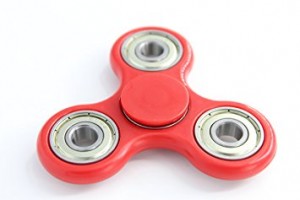 There’s a new fad that is taking over classrooms of all age groups. Students are playing with toys called “fidgets” while they are in class. Parents need to know that there is a constructive purpose for using a fidget – at least, for some students. Fidgets are all the rage now, but the concept isn’t new.
There’s a new fad that is taking over classrooms of all age groups. Students are playing with toys called “fidgets” while they are in class. Parents need to know that there is a constructive purpose for using a fidget – at least, for some students. Fidgets are all the rage now, but the concept isn’t new.
The fidgets that are popular right now are small toys that spin. CNN described them this way: A fidget spinner is considered to be a type of fidget toy; a low profile, handheld device that people can, well, fidget with without making a big scene. A fidget spinner has a stable middle and a disc with two or three paddles that can be spun, much like a ceiling fan. The result is supposed to be relaxing and satisfying, and really good spinners can keep going for minutes at a time.
The use of a fidget in the classroom is not new. It is something that special education teachers have been offering to their students for many years now. The spinning toys that are popular today are only one example of a fidget. Other types include: small, soft, stuffed animals; squishy stress balls; and little gadgets that have buttons to depress or balls to roll or pieces to move on each side.
ADDitude, a website that provides expert guidance and support for living better with ADHD and its related mental health conditions, explains how fidgeting sharpens focus for people who have ADHD. They point out that recent research suggests that the body affects the brain as much as the brain affects the body.
John Ratey, M.D, wrote a book called Spark. In that book, he shows that physical activity – even something as small as fidgeting hands – increases levels of the neurotransmitters dopamine and norepinephrine in the way ADHD medications do. Both chemicals play a key role in sharpening focus and increasing attention.
If your child spends all (or part of) his or her day in special education classrooms, there’s a good chance that students have been offered some form of fidgets. A good fidget is handheld, non-disruptive, and something a student can use without having to give any thought to. Some special education teachers encourage students to use their fidget toy in their lap (to decrease the potential of distracting other students with it).
Some schools have placed bans on the popular fidget spinner toys. The reason is often because the teacher thinks the toys are too distracting. There are news articles indicating that some schools have a problem with kids stealing these popular toys from their classmates.
Banning fidgets, in all forms, takes away a helpful tool that students with ADHD, or autism, or other conditions, truly need. Schools that ban the spinning fidget should still allow students to use a different kind of fidget when they need to.
Related Articles at Families.com:
* Study Finds Increased Diagnosis of ADHD
* Symptoms of ADHD (Attention-Deficit Hyperactivity Disorder)

